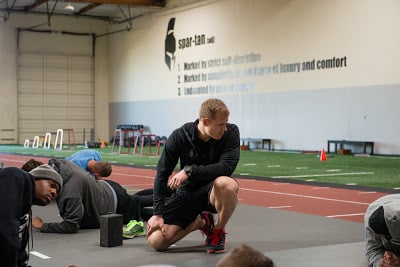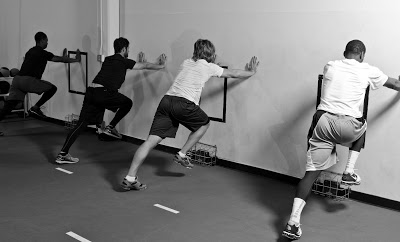
Over the next few weeks, we will build on Sparta’s philosophy of neuromuscular activation by introducing the movements from our athletes’ daily routine. Last week we covered the goal of activation; to excite or prepare stabilizer muscles to control body position.
This body control is the result of the separation between control at one body segment and range of motion at another. The analogy that we used last week is that in order for a rubber band to stretch and then snap, it must first have an anchor. Ultimately, the sequencing of stability and mobility results in each athlete’s Movement Signature.

Our first activation exercise is the Knee Up Hold. The goal is establish thigh separation – full flexion of the hip on one leg while maintaining full extension of the hip on the other leg. In order to accomplish this, the athlete must activate the hip flexors and the hip extensors in opposition. For example, one knee/leg drives up while the other drives downward. This sequence or Movement Signature has a profound impact on sprint mechanics and many other movements in sport.
Brace torso, glutes, and quads
Maintain straight down leg (lock the knee)
Keep knees and toes pointed straight ahead, 90 degrees at the hip and 90 degrees at the knee
This exercise looks deceptively simple. However, you can get better at it everyday by increasing the range of motion at the top hip without sacrificing extension and stiffness of the down leg. Additionally, as our athletes progress to a higher level we introduce “eyes closed” variations which further challenge proprioception. Give the Knee Up Hold a try this week, and pay attention to how your ability to sequence hip flexion and hip extension is affecting your Movement Signature.